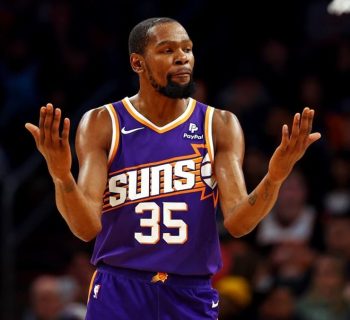NBA
Analytically Speaking: Breaking Down Miami’s Woes

Strange as it may sound, especially after coming one win shy of reaching the Eastern Conference Finals last season, there was a feeling that things would take a turn for the worse in Miami.
Free agency started on the right foot for the franchise, as the team re-signed center Hassan Whiteside to a four-year deal worth nearly $100 million. But soon, the defections began pouring in.
Veterans Luol Deng and Joe Johnson decided to take their talents to the Los Angeles Lakers and Utah Jazz, respectively. And then the big shocker: Dwyane Wade opted to sign with the Chicago Bulls. Next, any hope of a return to the court – at least in a Miami Heat uniform – for All-Star forward Chris Bosh was squashed by team president Pat Riley, who made it perfectly clear that the franchise was moving on from the sidelined star.
As it stands currently, the Heat (2-8) have lost six straight contests and starting point guard Goran Dragic is on the shelf nursing an ankle injury with a return date still up in the air.
One of the primary reasons the Heat are struggling has been their inconsistent offensive attack. The fact that the team has struggled putting the ball in the hoop wouldn’t surprise even the most casual fan since losing Bosh, Wade, Deng and Johnson alone would put any team on the ropes.
The team is averaging 94.4 points per contest, which ranks 29th in the league in scoring. And even though their defense (97.5 points) has been sturdy, it hasn’t been enough to offset the offensive woes.
But let’s dig deeper and evaluate just what is going wrong with the Heat’s offense.
Drives to the basket
Miami lacks knockdown three-point shooters and most of their offensive possessions are focused on trying to create penetration. According to NBA.com, the Heat lead the league in drives to the basket with 38.7 per contest. But in a cruel twist of fate, Miami ranks dead last in field goal percentage off those drives – connecting on just 35.2 percent of their attempts (6.4 out of 18.2) through the first 10 games of the campaign.
The loss of Dragic in this regard hurts the unit, as the veteran connected on 48 percent of his field goal attempts classified as drives. However, the duo of Dion Waiters (4.9 attempts) and Justise Winslow (4.3 attempts) have combined to shoot 30 percent on their drives to the basket.
Post Touches
The Heat feature one of the most dominating big men in the game today in Whiteside, who is averaging a monstrous 18.2 points and 15.9 rebounds per game this season.
Miami currently ranks seventh in post touches (17.6) and 12th in field goal percentage (62.5 percent) and shot attempts (9.6) per game in the post. However, the team ranks second in the league for the most turnovers from the post (1.5), behind the Oklahoma City Thunder (1.8).
Whiteside, as the team’s lone interior threat, accounts for 9.3 post touches per night – with no other Miami player averaging more than 1.9 per contest.
Pull Up Shooting
The pressure on Whiteside on the low block is magnified by the team’s struggles from the perimeter. According to NBA.com, Miami is 29th in the league in points generated from pull-up jumpers (12) on a nightly basis.
Outside of Josh Richardson, who is shooting 50 percent on his pull-up jumpers, no Miami player is shooting over 40 percent in this category. Guard Tyler Johnson’s 37 percent from the floor on pull-up jumpers holds the team’s second-best mark. Veterans Luke Babbitt, Waiters and Dragic are all shooting below 30 percent in pull-up shooting situations on the season.
The trio of Dragic, Wade and Bosh was never considered an offensive juggernaut, by any stretch of the imagination; however, they bailed out the team on countless occasions. For now, the team is waiting on the new core to develop their offensive prowess while continuing to tighten up their already solid defense.













